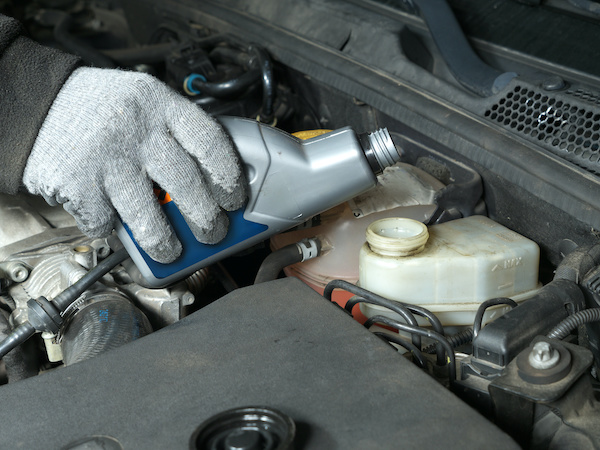Posted on 6/24/2021

There is only so much auto terminology that the average person can understand. Most people confuse tire alignment and tire balance considering they both provide you with a smoother ride. If you’re wondering, “What is a wheel alignment?” or, “What does tire balancing do?” It's time to review auto care vocab. Wheel Alignment is the process of altering the angles of the wheels so that they are making contact with the ground evenly and parallel to each other. The purpose of these adjustments ultimately maximizes the life of the tires and keeps the vehicle driving straight. Here are symptoms to look for if you need a tire alignment: Uneven or accelerated tire wear Pulling or drifting Wandering on a straight, level road Off-centered steering wheel Squealing tire sounds On the other hand, Wheel Balancing corrects the weight imbalance on your wheels and ensures that the tires spin correctly and without vibration. A certified technicia ... read more
Posted on 5/18/2021
.jpeg)
Speed bumps are necessary for controlling the velocity of our driving in subdivisions, on school property, and anywhere else where normal driving can threaten the health and safety of pedestrians. Extreme caution is warranted when driving over them, as they can result in damage done to your vehicle if proper precautions are ignored. The first thing that can get damaged is your shocks. This is true in situations where you could be driving over a speed bump so fast that the shocks don't have much time to really absorb the heavy impact. As a result, they could become damaged or bent to the point that you could lose hydraulic fluid. That's why it's best to drive over them at the lowest possible speed that you can. Damage to your vehicle's exhaust system may also happen. Since the exhaust pipe is located at the bottom of your car and right at the rear, it could just as easily bump it to the point where it might break the exhaust pipe or tear off the muffler. These events h ... read more
Posted on 4/23/2021

Some car owners have probably come across an overheating problem, especially when they need a driver. Apart from inconveniences and frustrations, car overheating can lead to unexpected vehicle breakdowns on the road. Multiple car engines operate at a temperature ranging between 195°F and 220°F range. Car owners should get insights on sources of car engine overheating and look for a professional auto engine mechanic to provide repair solutions. Some of the reasons leading to your car overheating are discussed below: Cooling System Leaks A small leak can turn into an expensive repair or a serious headache, and you probably don't want to experience it. Leaks in the radiator, freeze plugs, heater core, and thermostat housing can impact the entire cooling system. Car owners can identify leaks by looking under the car for drops on the ground. These leaks can make the coolant reservoir tank become empty, causing the engine to overheat. With the ... read more
Posted on 3/16/2021

Did you know there are 6 million car accidents in the United States every year? That's over 16,000 per day. Many of these accidents may be prevented by proper routine maintenance, such as checking brake fluid. Brake fluid is one of the most important fluids in your vehicle. Without brake fluid, your brakes won't work properly. Basically, the brake fluid is what makes your vehicle's braking system function. The brake fluid flows through the brake lines and supplies the necessary force to stop your wheels from turning when you push the brake pedal. To stay safe on the road, always make sure that your vehicle has the proper amount of brake fluid. There are a few obvious signs that indicate your car is low on brake fluid. 1. Your Anti-Lock Braking System (ABS) light turns on. Although some older cars don't have this feature, most modern vehicles have an ABS light on the dashboard to indicate that your brake fluid needs to be changed. 2. Your brakes feel firmer or softer ... read more
Posted on 2/18/2021

There is generally a reason for it when the oil light comes on in your vehicle and it's not something you should ignore. The oil light will usually come on to let you know that your vehicle is low on oil. While it may not be a danger to your safety to drive a little further once the oil light comes on, it is a danger to your vehicle to go over far. The engine has to have oil in order to operate and when you drive on low oil, you can cause damage to that most important part. Here are a few reasons why that oil light might come on: Low Oil Pressure The oil pump may not be circulating enough oil which makes your engine feel like it is not getting enough. You should get your car to the auto shop right away to get an inspection. Driving with low oil levels and pressure can damage the engine as a whole. The Need For An Oil Change Oil lights are handy because even if you forget to change your oil at the right interval, the oil light will issue a warni ... read more